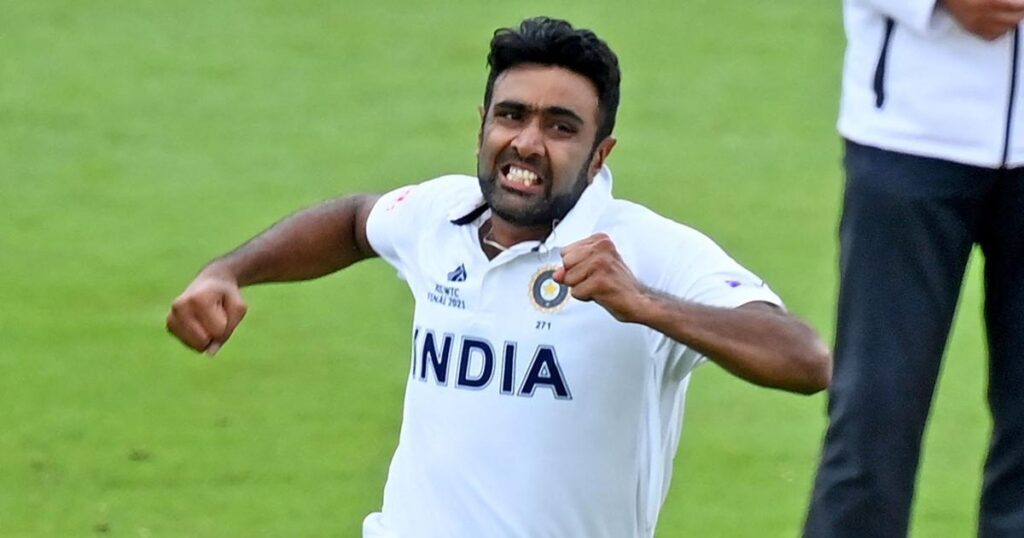
Gloomy grey skies, rain forecast for later in the match. A generous smattering of grass on the surface. There are a number of mitigating factors that the Indian think-tank could point to for not selecting R Ashwin in the playing XI for the World Test Championship (WTC) final. But as the opening day wore on, with India’s bowlers not able to exert a semblance of control under an ever-brighter sun, it was hard not to look at Ashwin sitting in the stands and think: What if?
Leaving any emotion aside, the facts themselves are pretty instructive. Since Ashwin became a regular in the Test side in late 2011, this is the 17th match that India are playing on English soil. Ashwin has played just seven of those. This is the sixth straight Test in England where he has sat out.
It’s not uncommon that a certain captain or coach will have very clear ideas about the playing combination that they want. Had Ashwin been a victim of that, few eyebrows would have been raised. But this issue goes beyond individuals. In 2014, when he played just two Tests out of five, MS Dhoni was the captain, and Duncan Fletcher the coach. In 2018, Virat Kohli led a team coached by Ravi Shastri.
The same combination was in charge in 2021, though by the time the postponed final Test was played in July 2022, Rahul Dravid was coaching a team captained by Jasprit Bumrah, leading in the absence of Rohit Sharma. So, that’s four different captains, and three coaches, all of whom have been part of decisions to leave Ashwin out.
We’re often told, even by ‘experts’, that Ravindra Jadeja offers more control with the ball. That seems a funny thing to say when Ashwin’s average (28.11), economy rate (2.52) and strike-rate (66.7 balls per wicket) in England are all considerably better than Jadeja’s numbers – 48.17 (average), 2.72 (economy rate) and 105.9 (strike-rate).
If you take out the superb 104 that Jadeja made at Edgbaston last year, in partnership with Rishabh Pant, even their batting numbers are not dissimilar. So, why then is Ashwin always the fall guy? And why have so many bizarre selections involved him?
Also Read: Ashwin Omission a Case of Overthinking from Team India?
Back in 2014, India went to the Ageas Bowl in Southampton for the third Test 1-0 up in the series. But when Ishant Sharma, one of the match-winners at Lord’s, limped out on the eve of the game, it seemed a good bet that Ashwin would get his opportunity. Instead, India played Pankaj Singh, a Ranji Trophy stalwart with no pretensions to being world-class. Michael Holding, who was part of Sky’s commentary panel, was heard saying: “If I was an English batsman, I know who I’d rather face between Pankaj and Ashwin!”
England won at a canter, and Moeen Ali – who himself would be the first to admit that he’s nowhere close to Ashwin’s class – took 8 for 129 with his off-spin. In 2018, Ashwin was the one dropped for The Oval Test despite the fact that it was dismal batting – Kohli being a notable exception – that cost India the series.
In 2021, India’s first Test of the English summer was the WTC final against New Zealand. Even on a surface loaded in favour of the quicks, Ashwin was outstanding, with match figures of 4-45. He hasn’t played in England since.
What’s the real story here? In 2014, there were persistent whispers that Ashwin had paid the price for India’s failure to win at The Wanderers in Johannesburg in December 2013. With South Africa set a massive 458 for victory, the expectation was that Ashwin and others would bowl India to victory. Ashwin went wicketless on the final day, on a pitch that barely deteriorated, and India were left to hang on for a draw.
Ashwin was the first to admit that he could have bowled better that day, but he was also employed more as a run-containing tourniquet than an attacking threat. And it also shouldn’t be forgotten that he and India were thwarted by AB de Villiers and Faf du Plessis, two of the finest batters of their generation.
Since then, we have seen Karn Sharma play ahead of Ashwin in an Adelaide Test, and the constant refrain that overseas conditions don’t bring out the best in him. Which would be fine if it wasn’t such a terrible lie.
Consider Australia, for example, a graveyard for many a visiting offie. Muttiah Muralitharan averaged 75.41 with the ball in his five Tests there, Graeme Swann’s 22 wickets (eight Tests) came at a cost of 52.59, while Nathan Lyon averages 31.46 in his home conditions. Ashwin? He has 39 wickets in 10 Tests in Australia at an average of 42.15, figures skewed by the beatings in 2011-12 and 2014-15, when the batters often gave the bowling unit no runs to play with.
If you look at the last two trips to Australia, 2018-19 and 2020-21, Ashwin has 18 wickets from four Tests at an average of 27.50. Those numbers are also testament to the tireless effort he has put it in to reinvent himself, exploring different approaches to the crease, angles of delivery and drift.
Does it then come down to personality? It’s no secret that Dhoni preferred bowlers he could micro-manage from behind the stumps. In overseas Tests, his strategy was usually based on containment and not attack. Ashwin is one of the game’s better thinkers, and not the sort to blindly follow orders. For someone who doesn’t know him at all, he may come across as prickly or arrogant.
He isn’t. He just has immense self-belief, and the thick skin of someone who has had to scrap for everything that’s come his way in the game. There are perhaps echoes here of Benrd Schuster, the West German footballer of the 1980s. After Johan Cruyff and before Michel Platini and Ruud Gullit, Schuster was the most gifted player on the continent. Yet, after a misunderstanding with the team management over a post-match party – he chose not to attend because he had to get back to Barcelona, his club side at the time – he never played for the national team again.
The Silver Ball winner in 1980, when his midfield play inspired West Germany to Euro glory, Schuster finished a legendary career with a mere 21 caps. A straight-shooter with clear ideas on how he liked the game to be played, he was considered a ‘trouble-maker’ by some of his coaches.
Ashwin turns 37 in September, and will most likely not play a WTC final again. After the opening day’s leather-hunt, it’s not just him that has cause to look back on this decision with regret. Controversial selections are part and parcel of sport, and most fans will accept that. As long as they’re not justified by half-truths and outright lies.
Also Read: Difficult to Drop Champion Bowler Like Ashwin, says Mhambrey




